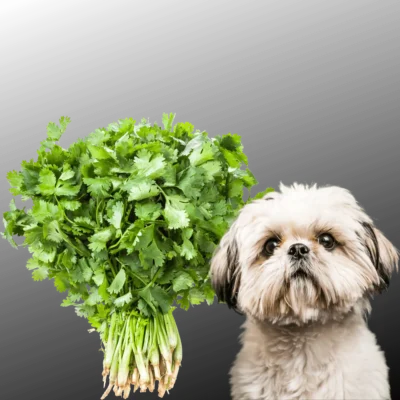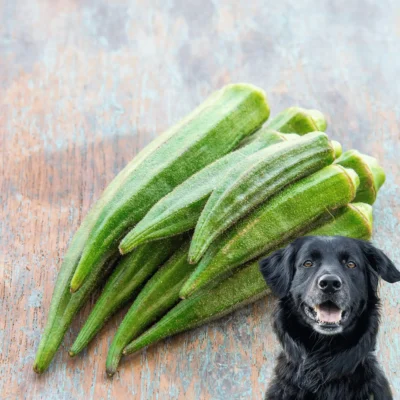Cilantro, with its vibrant green leaves and distinct flavor, is a popular herb used in various cuisines worldwide. Many people enjoy its unique taste and use it to enhance the flavor of dishes from around the world. But what about our furry friends? Can dogs eat cilantro?
In this article, we’ll find out if it’s safe for dogs to consume cilantro and explore how we can include it in their diet without causing any harm. Let’s embark on this journey together and discover the potential benefits of adding cilantro to our canine companions’ meals!
Here are the topics we’ll discover in this blog post:
- What is Cilantro?
- Can Dogs Eat Cilantro?
- Potential Benefits of Cilantro for Dogs
- How Do You Safely Feed Your Dog Cilantro?
- Consult Your Veterinarian
What is Cilantro?
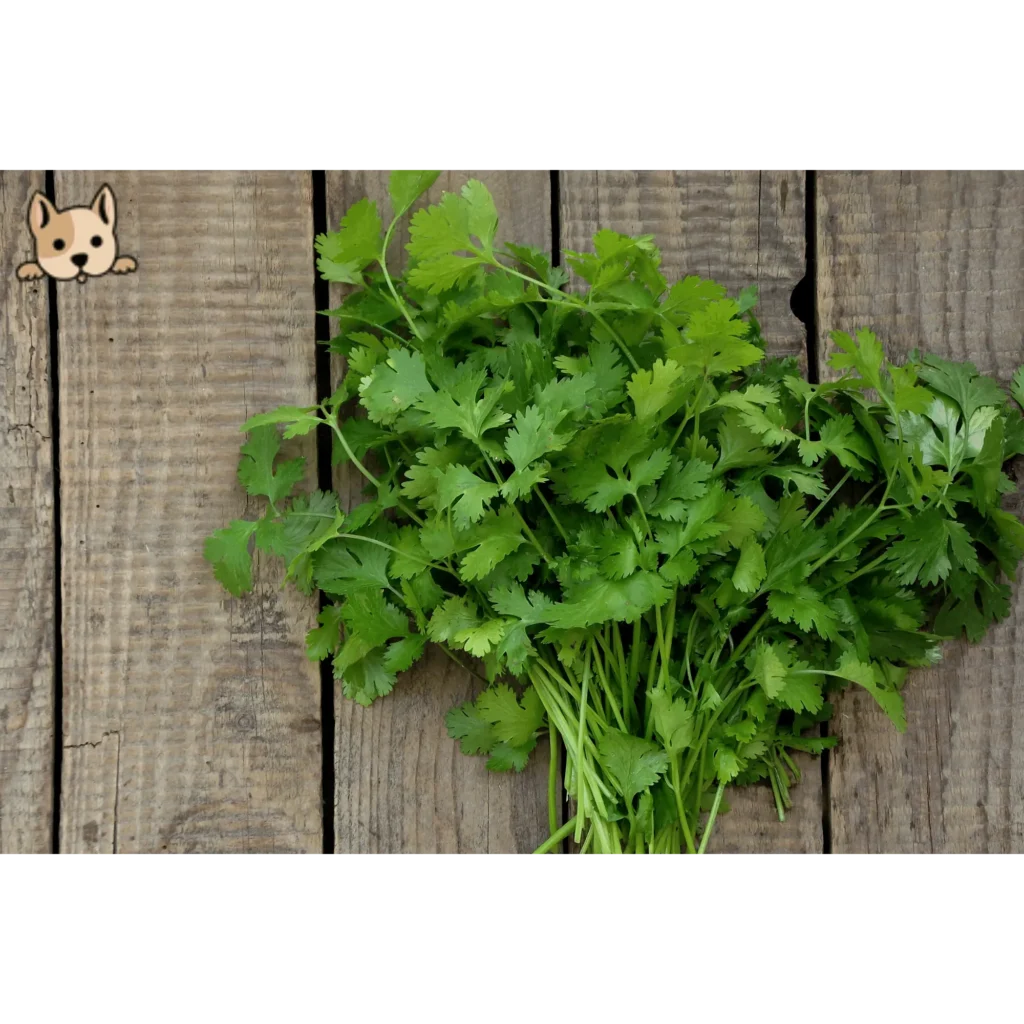
Cilantro, an herb belonging to the Apiaceae family of plants, is commonly known as coriander in some regions. It is a popular herb used in culinary dishes worldwide and is native to regions ranging from southern Europe to southwestern Asia. However, cilantro is now cultivated and consumed globally due to its widespread popularity.
Recognized for its delicate, lacy leaves and unique flavor profile, cilantro offers a distinct citrusy taste with hints of parsley and citrus zest. Both the leaves and stems of the cilantro plant are edible and frequently used in cooking. Additionally, the seeds of the cilantro plant, known as coriander seeds, are widely used as a spice in various cuisines.
Cilantro has extensive usage in cuisines such as Mexican, Indian, Thai, and Middle Eastern, where it adds freshness and flavor to an array of dishes. From salsas and curries to soups, salads, and marinades, cilantro is valued for its ability to enhance the taste and aroma of diverse culinary creations.
Can Dogs Eat Cilantro?
Yes, dogs can consume cilantro in moderation, and it may even provide some health benefits. Cilantro is non-toxic to dogs and can be a safe and flavorful addition to their diet when given appropriately.
This herb contains essential vitamins and minerals such as vitamin A, vitamin C, potassium, zinc, and others, which can contribute to your dog’s overall health and well-being.
However, it’s crucial to understand that cilantro should not be relied upon as the sole source of these nutrients in your dog’s diet. Instead, it should be offered as part of a balanced and varied diet that includes other nutritious ingredients.
As with introducing any new food, it’s advisable to introduce cilantro to your dog’s diet gradually and in moderation to ensure they tolerate it well. If you have any concerns or questions about feeding cilantro to your dog, consulting with your veterinarian is always a wise decision.
Potential Benefits of Cilantro for Dogs:
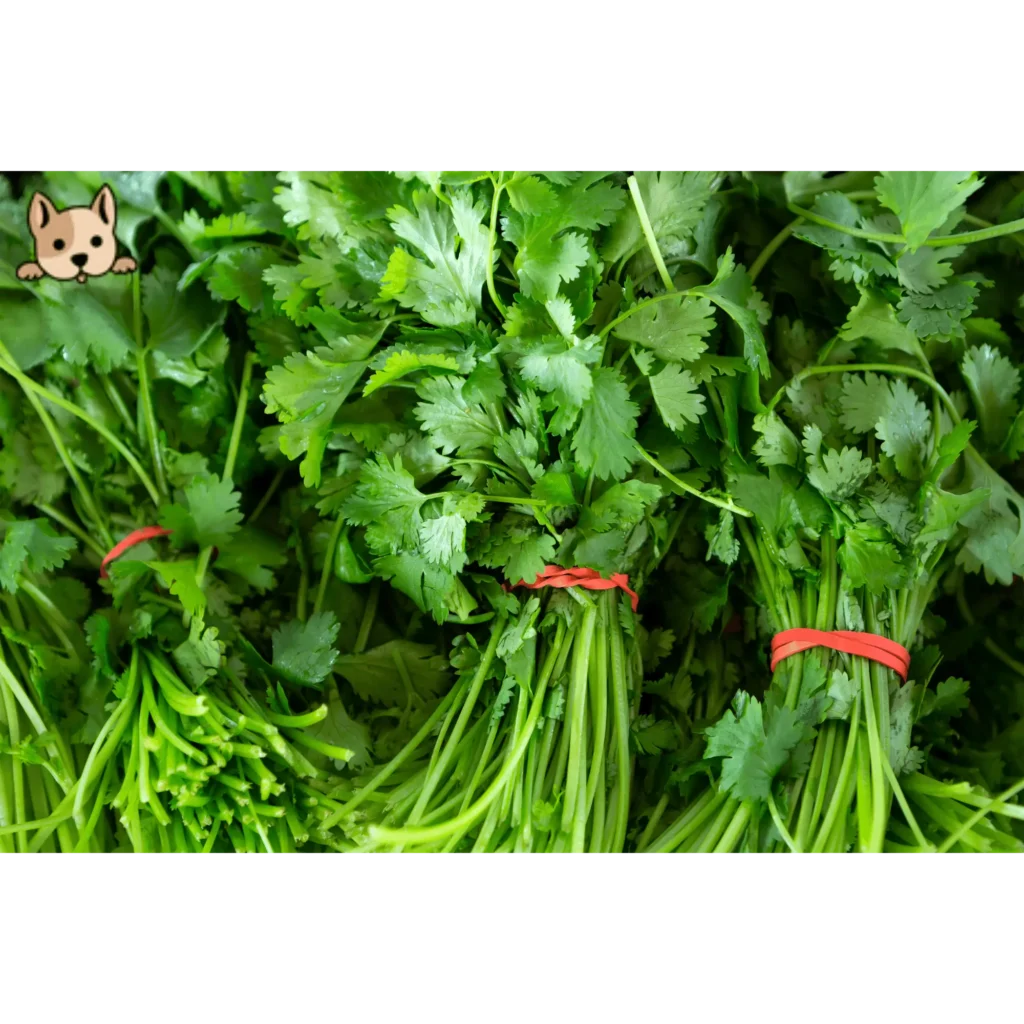
Cilantro can offer several potential benefits for dogs when incorporated into their diet in moderation:
1. Digestive Aid:
Cilantro contains compounds that have been reported to have antispasmodic effects on the digestive system. This means it may help relax muscles in the gastrointestinal tract, potentially easing discomfort associated with digestive issues like cramping or spasms.
Certain components in cilantro may help reduce gas production in the digestive system, alleviating bloating and discomfort in dogs. This can be particularly helpful for dogs prone to flatulence or gastrointestinal upset.
2. Nutrient Boost:
Cilantro is a good source of various vitamins, including vitamin A, vitamin C, vitamin K, and several B vitamins. These vitamins play essential roles in your dog’s overall health, supporting immune function, vision, skin and coat health, blood clotting, and energy metabolism.
Cilantro contains minerals such as potassium, calcium, magnesium, phosphorus, and manganese. These minerals are crucial for maintaining healthy bones and teeth, supporting muscle function and nerve transmission, regulating fluid balance, and participating in various biochemical processes in the body.
3. Anti-Inflammatory Properties:
Inflammation is a common cause of joint pain and stiffness in dogs, particularly in conditions like arthritis. Compounds found in cilantro may help reduce inflammation in the joints, potentially alleviating discomfort and improving mobility in dogs with arthritis or joint issues.
Chronic inflammation can compromise a dog’s immune system, but cilantro’s anti-inflammatory properties might help regulate this response, promoting a healthier immune system in dogs.
4. Fresh Breath:
Cilantro contains aromatic compounds that give it a fresh and pleasant scent. When dogs chew on cilantro leaves, these aromatic compounds are released, helping to mask or neutralize odors in the mouth.
Cilantro’s fresh and citrusy flavor can leave a refreshing aftertaste in your dog’s mouth, similar to how chewing gum or using breath mints can freshen human breath. Including cilantro in your dog’s diet as an occasional treat or addition to meals can help promote better breath naturally.
5. Antioxidant Support:
Cilantro contains flavonoids such as quercetin, kaempferol, and rutin, which possess strong antioxidant properties. These flavonoids help neutralize harmful free radicals in your dog’s body, reducing oxidative stress and protecting cells from damage.
Phenolic compounds found in cilantro, such as caffeic acid and chlorogenic acid, also exhibit antioxidant activity. They help scavenge free radicals, preventing them from causing cellular damage and oxidative injury.
It’s important to note that while cilantro can offer these potential benefits, it should be fed to dogs in moderation and as part of a balanced diet.
How Do You Safely Feed Your Dog Cilantro?
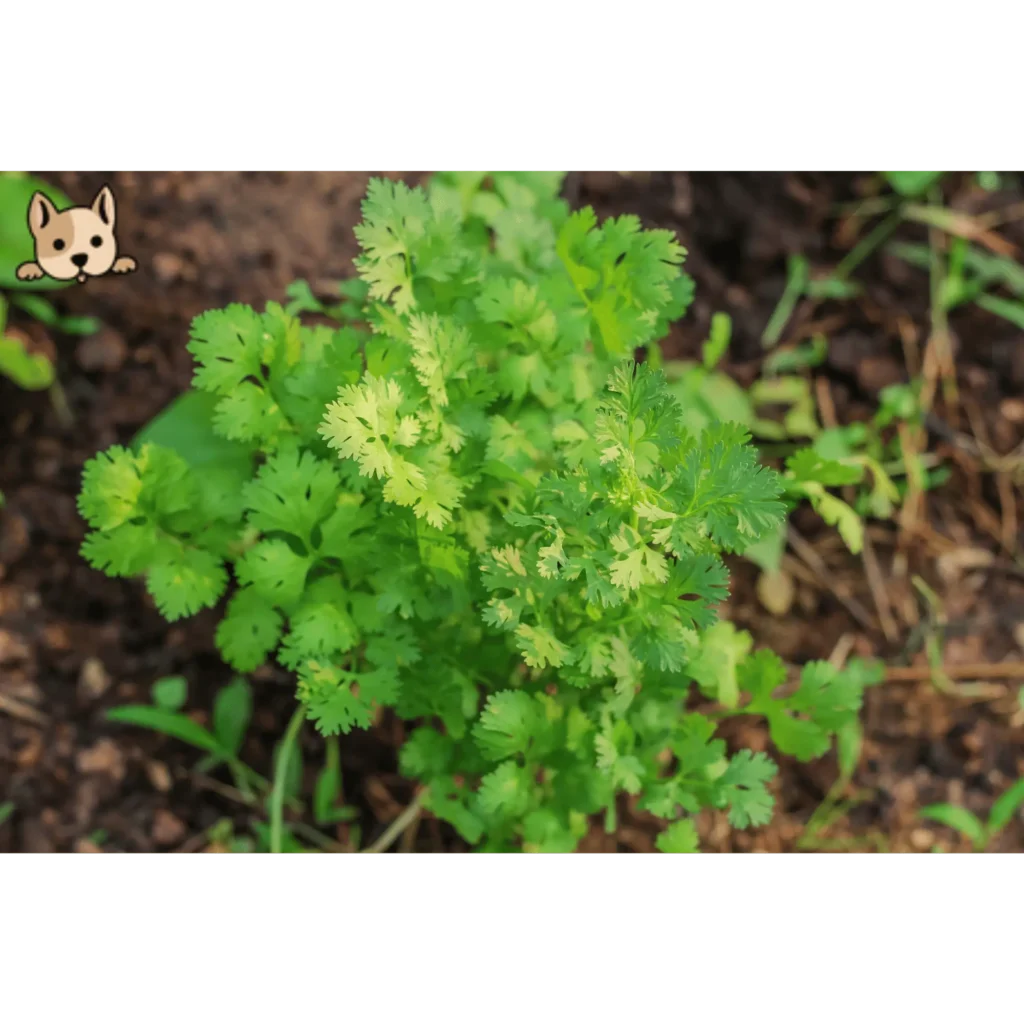
When introducing human foods into your dog’s diet, it’s always prudent to start with small quantities. While it’s not common, dogs can potentially have allergic reactions to new foods. If your dog has never eaten cilantro before, begin by feeding them a small amount—a pinch of cilantro or a couple of leaves should suffice. It’s important to keep a close eye on your dog for any negative reactions or side effects.
If your dog shows no signs of adverse symptoms, then it’s safe to incorporate small amounts of cilantro into their meals. You can chop up a few fresh leaves and mix them in with your dog’s food. Alternatively, you could sprinkle some dried cilantro onto their food or add cilantro oil extract to their water bowl.
However, it’s important to note that if your dog consumes large amounts of cilantro, such as if they get carried away in your herb garden, they may experience mild digestive issues. As always, observe your dog’s response and adjust their diet accordingly to ensure their well-being.
Consult Your veterinarian:
Certain human foods can indeed cause adverse reactions in canines, so it’s crucial to consult your veterinarian to determine whether it’s safe to add these foods to your pet’s diet.
This article serves as educational and informational material and should not be considered a substitute for professional medical or dietary advice. Always seek guidance from your veterinarian regarding your pet’s nutritional needs and dietary requirements.
Conclusion:
In conclusion, cilantro can be a safe and flavorful addition to your dog’s diet when given in moderation and prepared properly. While cilantro offers potential health benefits, including digestive aid, nutrient boost, anti-inflammatory properties, fresh breath support, and antioxidant support, it should be part of a balanced and varied diet alongside other nutritious ingredients.
When introducing cilantro to your dog’s diet, start with small quantities and monitor for any adverse reactions. Avoid feeding your dog the stems, as they can be difficult to digest. Instead, use only the leaves and incorporate them into your dog’s meals or treats.
As with any dietary change, it’s essential to consult with your veterinarian before adding cilantro or any other new food to your dog’s diet, especially if your dog has underlying health conditions or allergies.
Overall, by following these guidelines and consulting with your veterinarian, you can safely include cilantro in your dog’s diet and potentially enhance their overall health and well-being.
FAQs:
1. How much cilantro can I give my dog?
Cilantro contains some nutrients like calcium, magnesium, vitamin K, A, and C, but it’s best as an occasional treat for your dog. It’s essential not to give too much, as it should only make up a small part of their diet, about 10% at most. Too much cilantro or other human foods can upset your dog’s stomach and mess with their nutrition.
2. Why can’t dogs eat cilantro?
Sharing a bit of cilantro with your dog is safe, but remember to stick to the leaves and avoid the stems. The stems can be tough to digest and might cause tummy troubles for some dogs. So, keep it leafy when treating your pup to some cilantro!
3. Can dogs eat cilantro and parsley?
Ingredients like parsley, cilantro, ginger, turmeric, and cumin are typically safe for dogs in moderation, even for those with pancreatitis. However, it’s always a good idea to introduce new foods gradually and observe your dog for any adverse reactions. If you observe any unusual symptoms, it’s best to consult with your veterinarian for guidance.
4. Is the coriander plant toxic to dogs?
Coriander, or cilantro, is generally safe for dogs and can aid digestion. However, it’s vital to use it in moderation. It’s rich in vitamin K and folate, which are beneficial for dogs. If you’re feeding coriander seeds, grind them before giving them to your dog. If your dog shows any allergic or digestive symptoms after eating coriander, consult your veterinarian for guidance.






